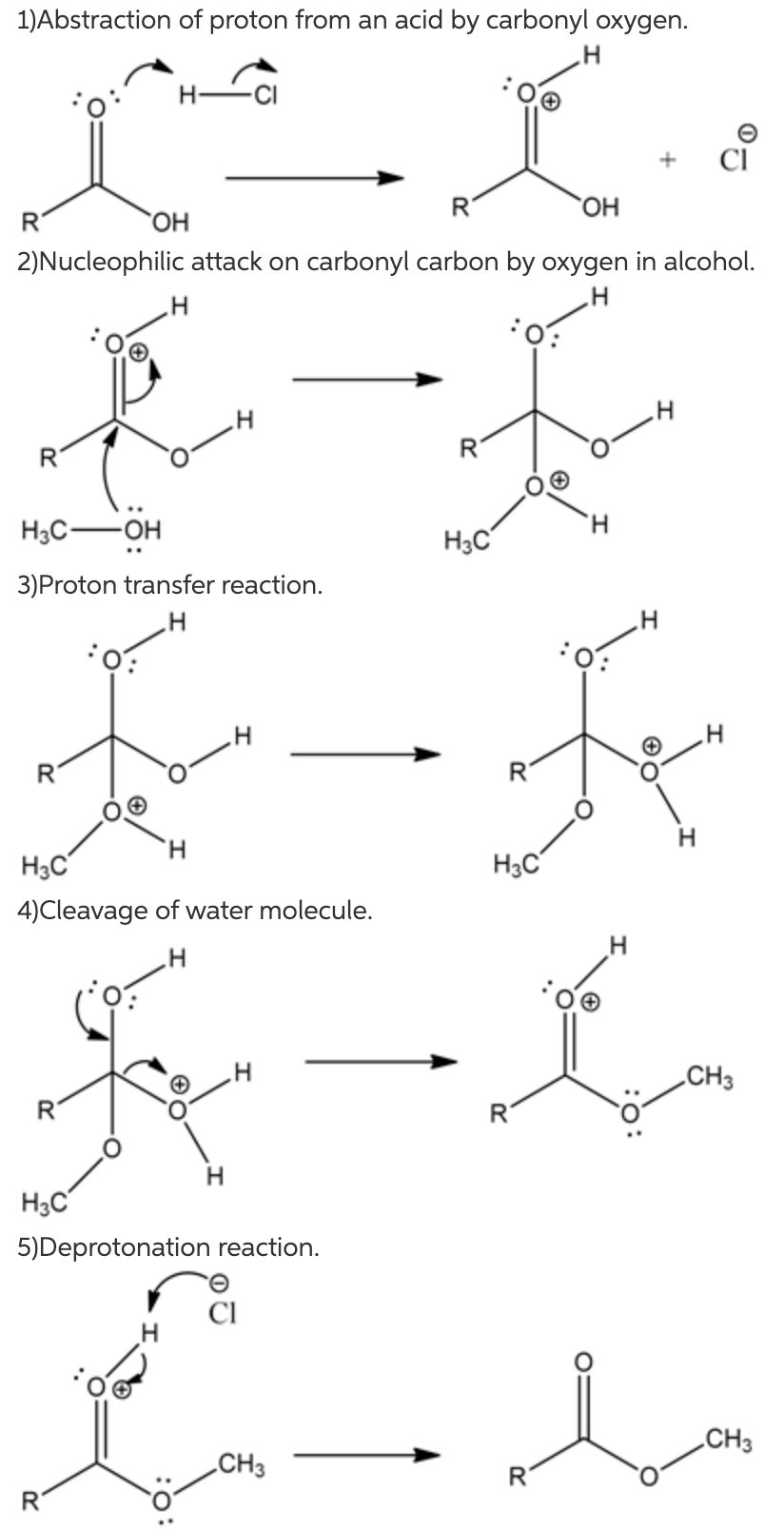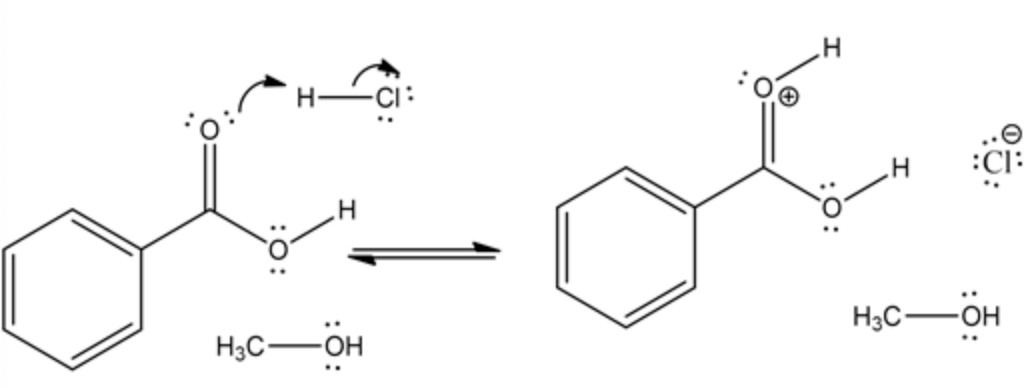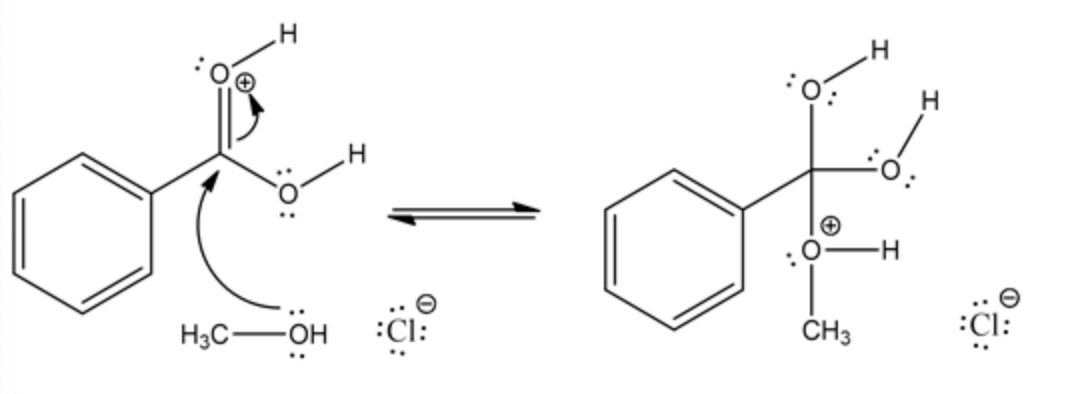Question
In: Chemistry
The Fischer esterification mechanism is examined in the following two questions in the assignment.
The Fischer esterification mechanism is examined in the following two questions in the assignment. Part 1 involves MeOH addition to form the key tetrahedral intermediate. Part 2 will involve loss of H2O to form the ester.

Solutions
Expert Solution
Concepts and reason
Fischer esterification:
It is an esterification reaction, in which carboxylic acid changes to ester when it reacts with alcohol in the presence of strong acid.
Fundamentals
The mechanism for Fischer esterification reaction:
1)Abstraction of the proton from an acid by carbonyl oxygen.


The lone pair of carbonyl oxygen in carboxylic acid abstracts proton from an acid by cleaving chlorine. This abstraction of hydrogen produces a positive charge on oxygen.

The lone pair electron of oxygen in alcohol attacks the carbonyl carbon and stabilizes the positive charge on carbonyl oxygen by resonance. The carbonyl attack by an alcoholic oxygen creates a positive charge on alcoholic oxygen.
The intermediate is formed by the abstraction of proton by chloride ion and stabilize the positive charge on alcoholic oxygen.
Related Solutions
please explain the Fischer Esterification and mechanism of the Fischer Esterification concretely in your words!!!! Then...
The mechanism for the Fischer esterification is shown on page 762 of your textbook. The acid...
Describe the process of each step in the experiment (Fischer esterification/ Isopentyl acetate lab). a. The...
Fischer esterification Reaction: n-Butyl Acetate Which one of the following choices describes most accurately the actual,...
Organic II lab: Fischer Esterification: Preparation of Benzocaine The protocol for this week’s experiment calls for...
Fischer Esterification: Synthesis of Isoamyl Acetate (Banana Oil) 4) a) What is the role of sulfuric...
Fischer Esterification Acetic Acid + Ethanol in the presence of Dowex, a solid catalyst. 4 samples...
Fischer Esterification Post lab question 1. Provide a brief description of how microwave works in the...
How would I find the theoretical and percent yield of a Fischer esterification? I used 1.5...
Good evening! I have synthetized benzocaine by Fischer esterification of para-aminobenzoic acid with ethanol and concentrated...
- C language · Pointers · Dynamic memory allocation · Functions · Arrays (dynamically allocated) PROBLEM:...
- Drawing on your knowledge of the theory of specialisation and exchange – supplemented by appropriate media...
- Using the predicate symbols shown and appropriate quantifiers, write each English statement as a predicate wff....
- Lowincomesville is a poor town. The mayor has decided to impose a law to cut all...
- What could happen if cells remain in the cell cycle indefinitely?
- How would comprehensive security differ from realism? Which do you think would be better? Why?
- Analyze a simple model of a consumer's response to a price increase. % change (growth rate)...
 Dr. OWL answered 4 years ago
Dr. OWL answered 4 years ago